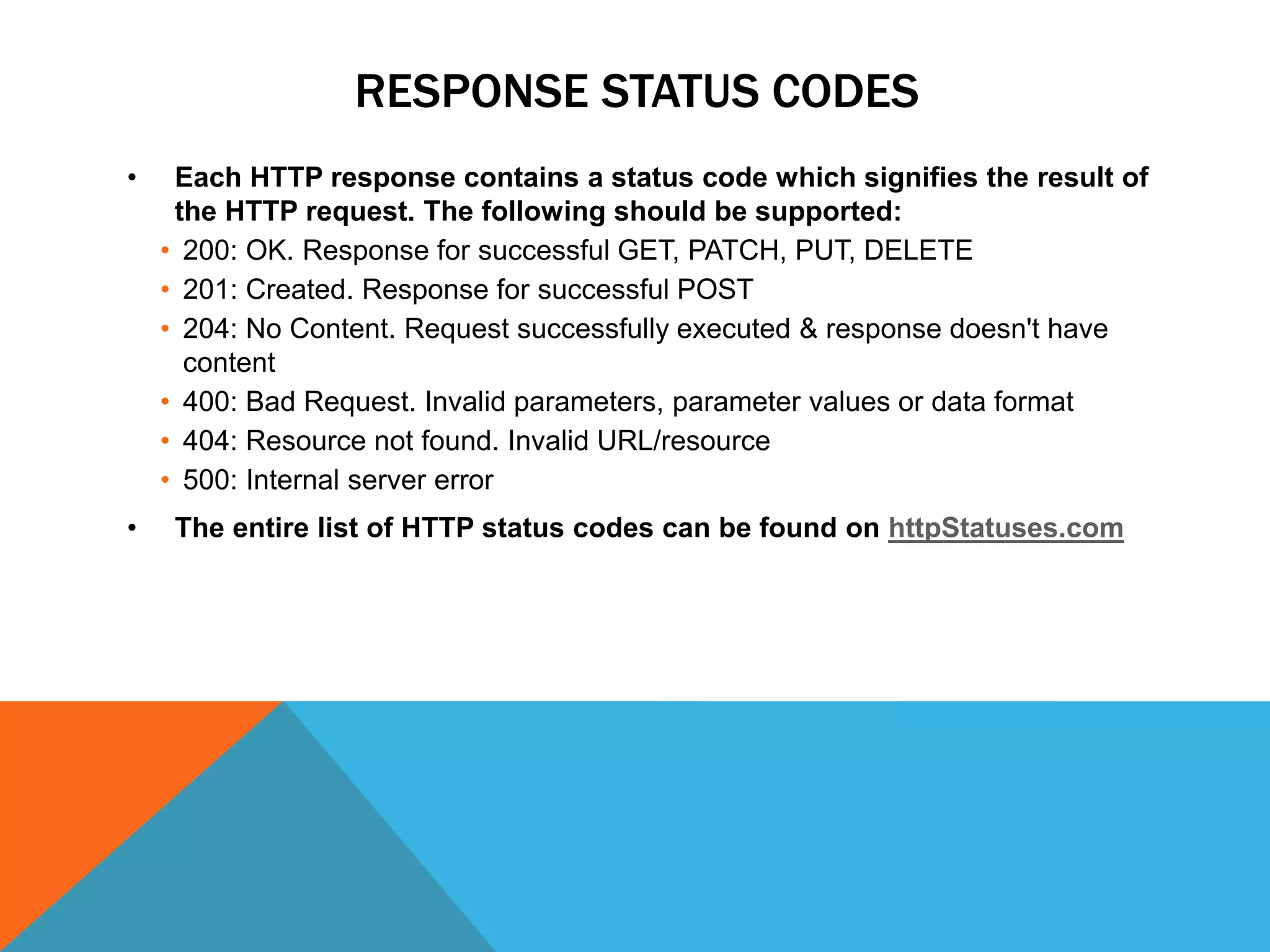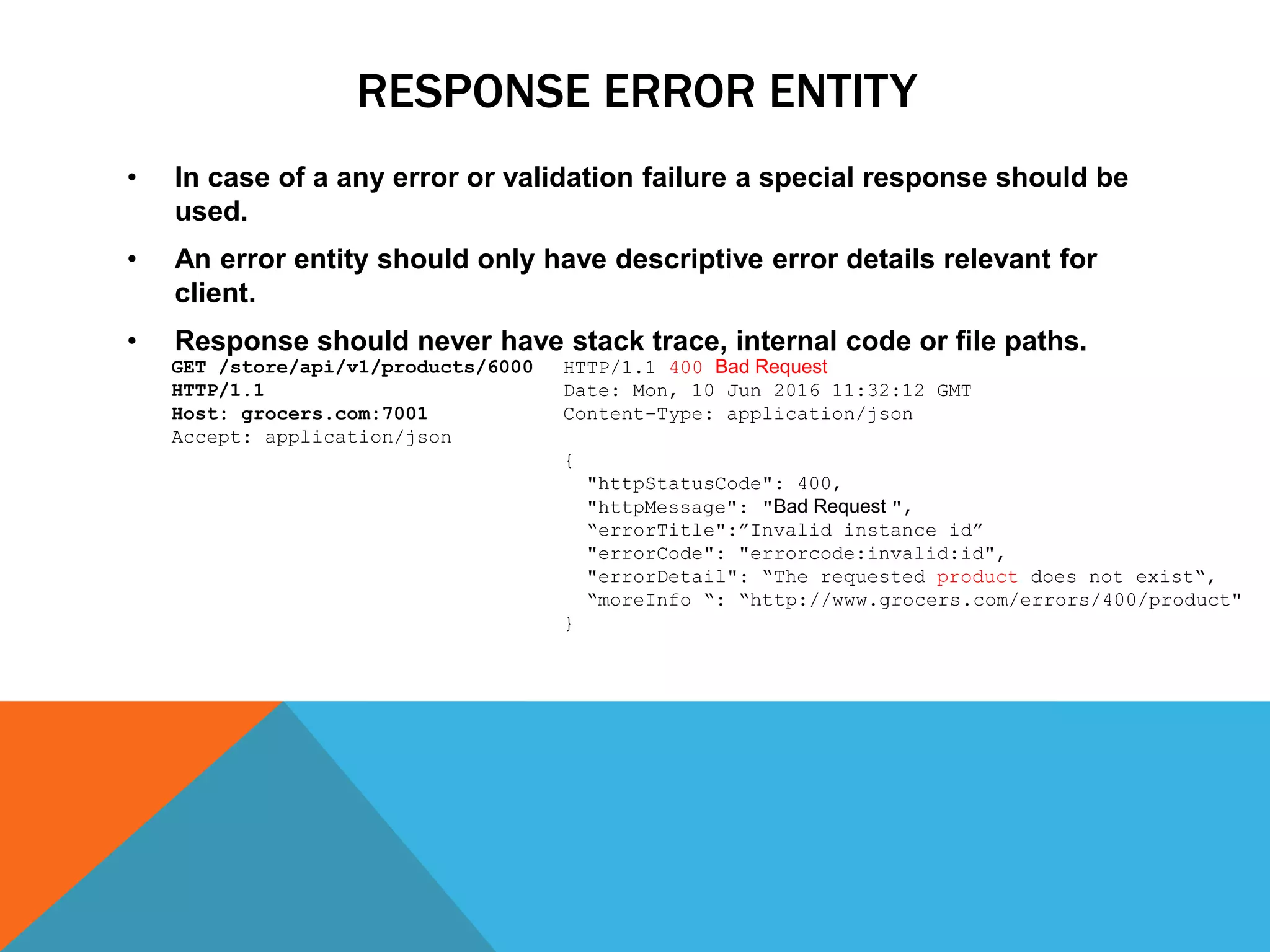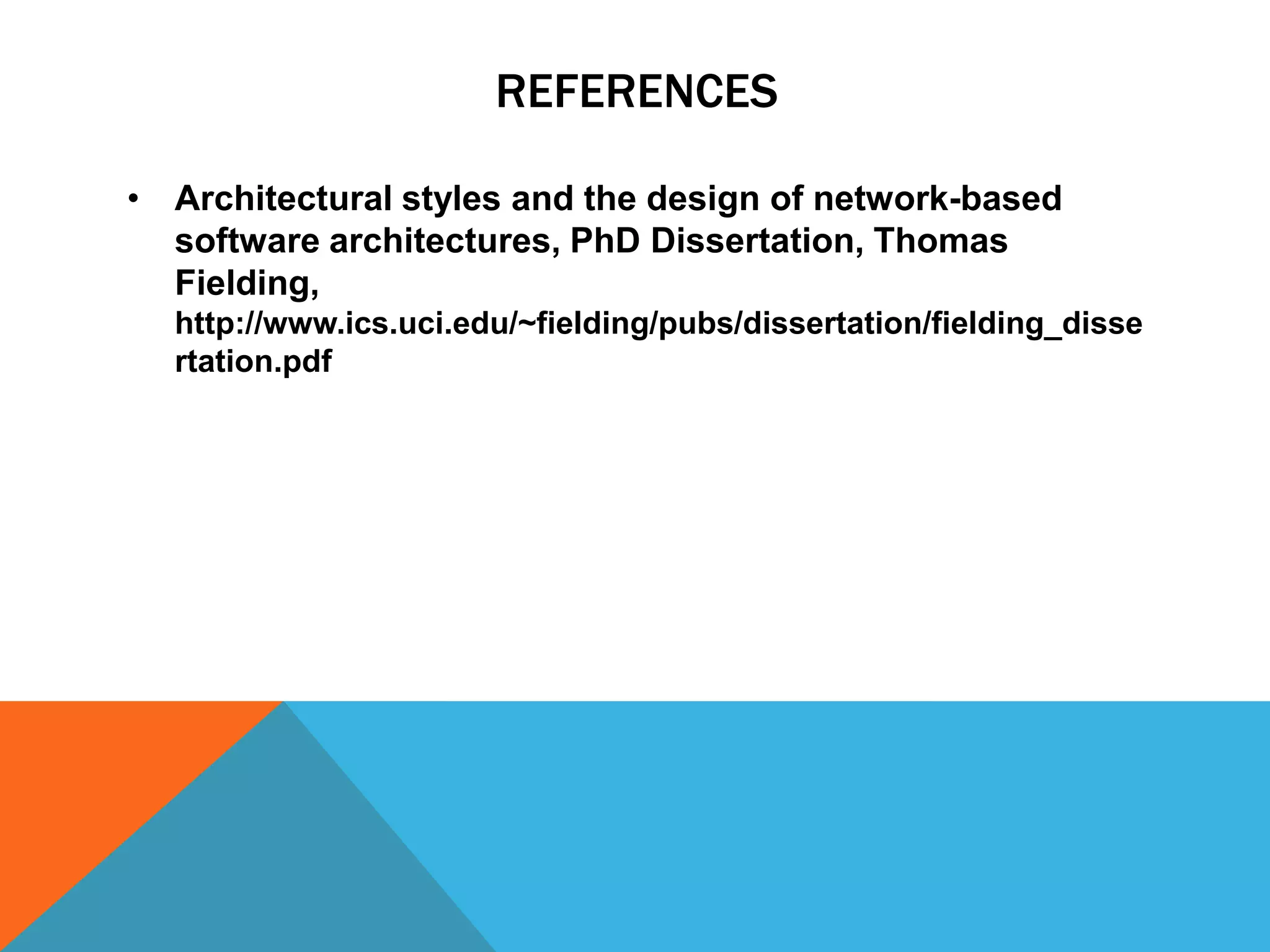This presentation outlines best practices for developing RESTful web services over HTTP, focusing on naming conventions, URI structure, API versioning, error handling, and response standards. It emphasizes the importance of standard HTTP methods (GET, POST, PUT, DELETE) for CRUD operations and provides guidelines for resource representation and interaction. Key topics include response status codes, managing resources, and ensuring clear communication with clients about resource availability and errors.
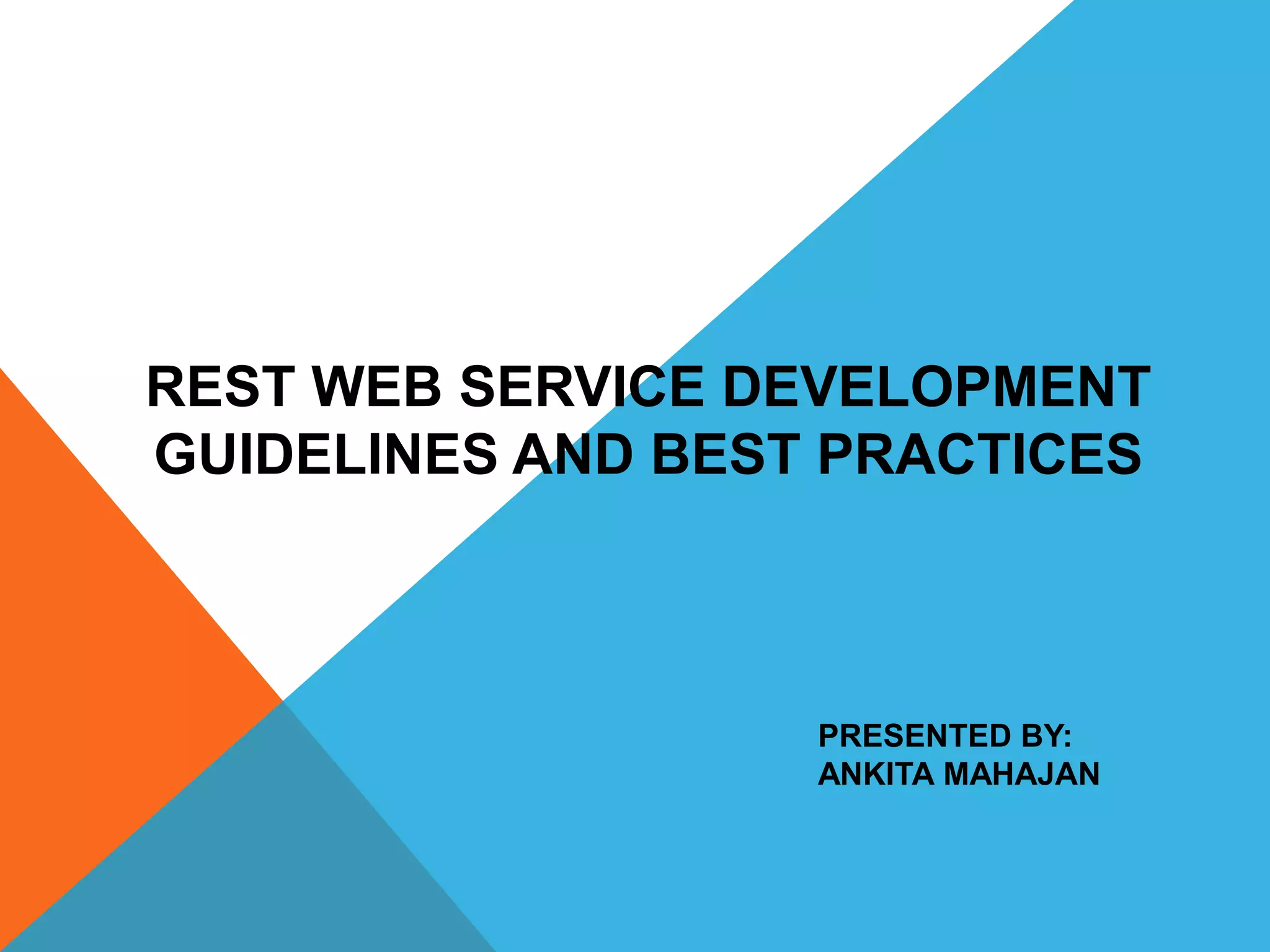


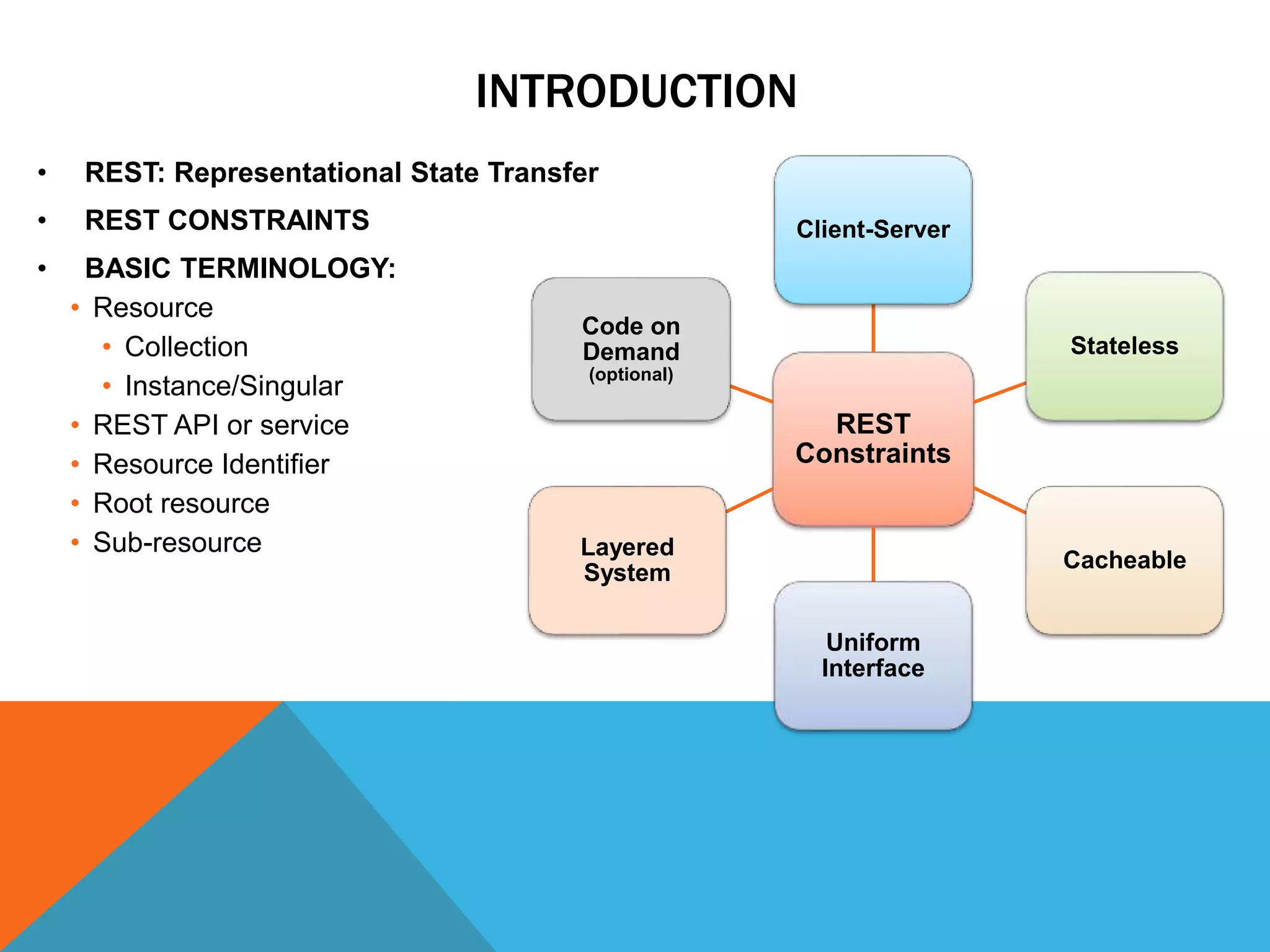
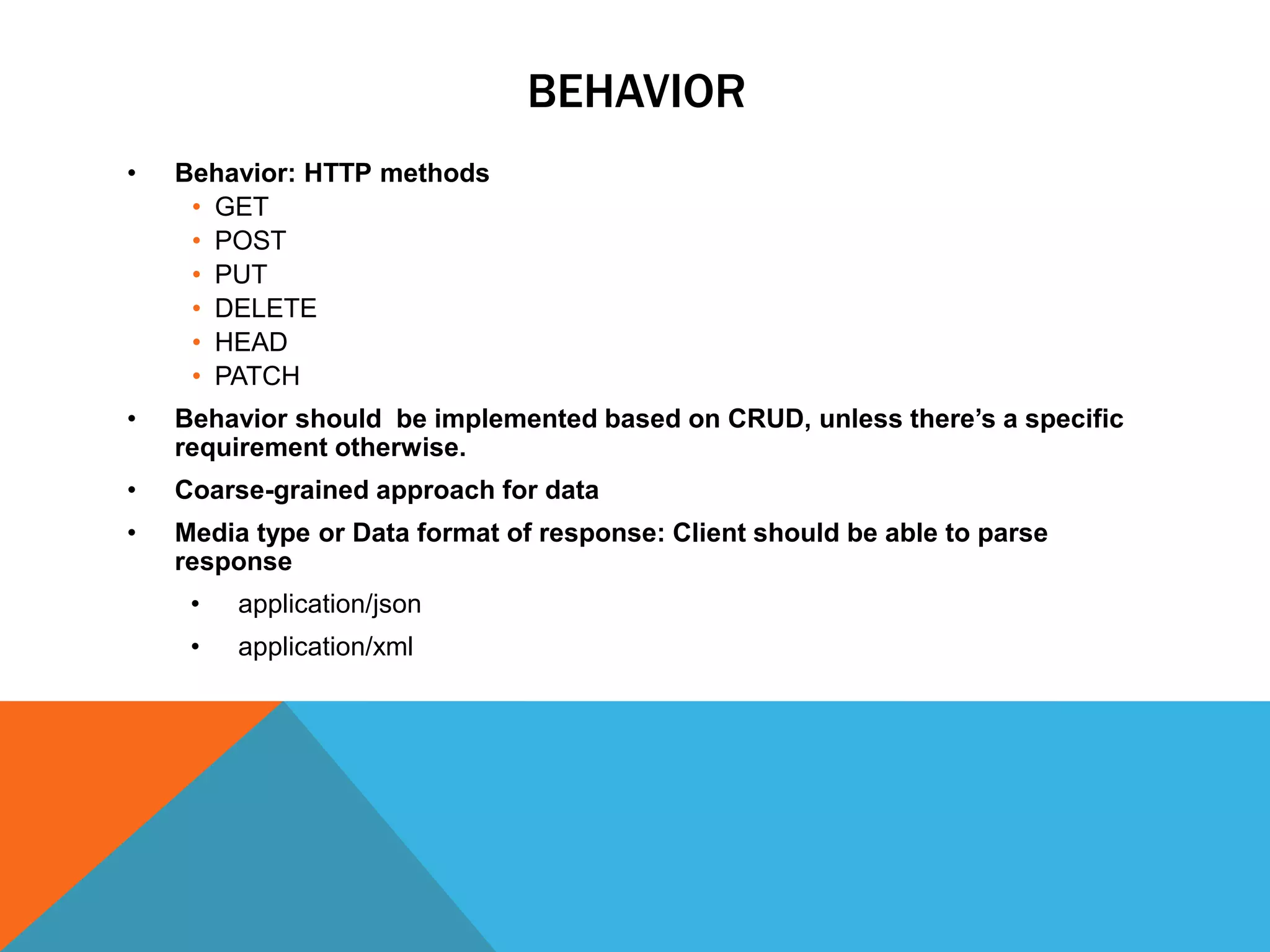
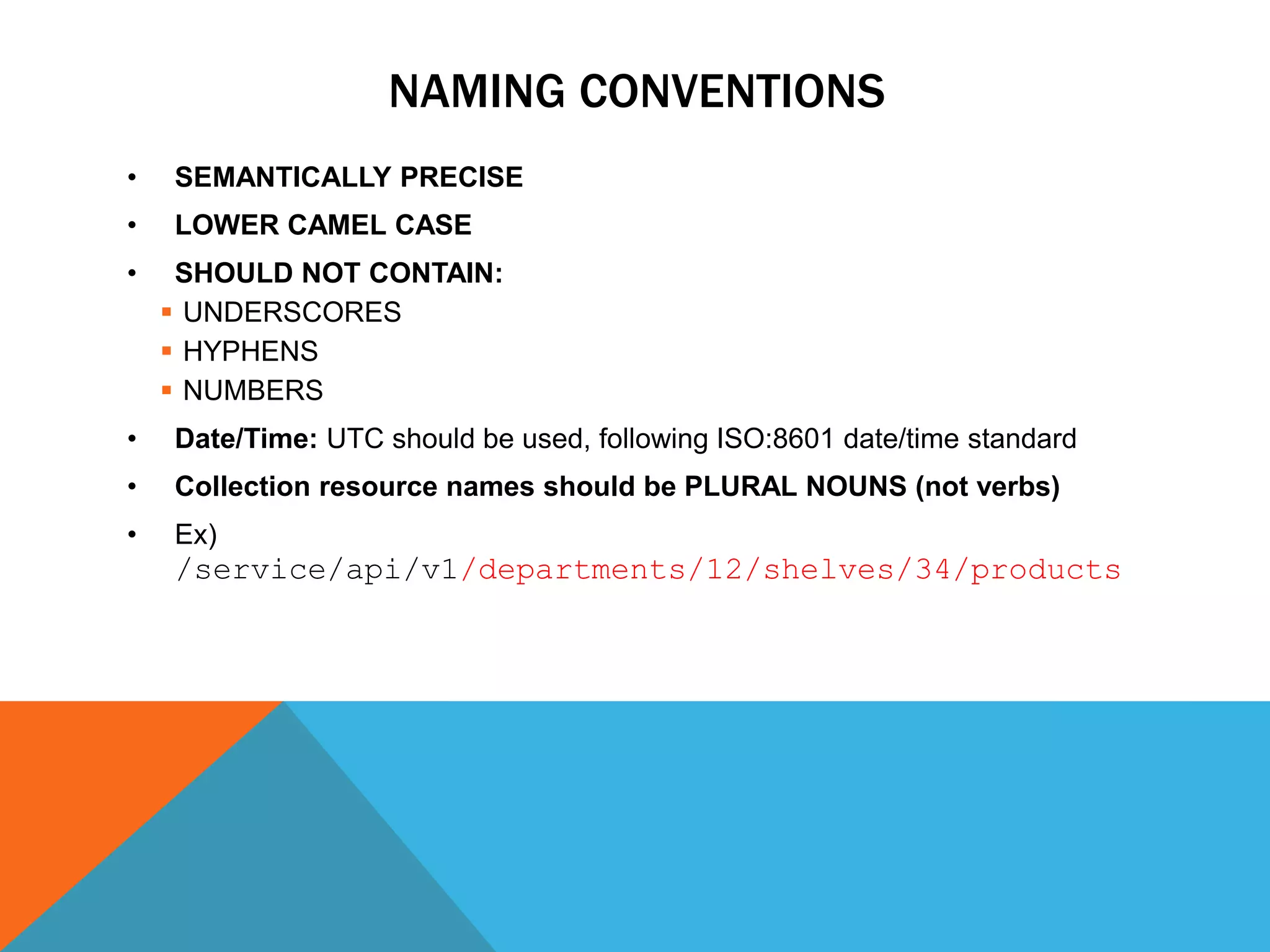
![RESOURCE URI
• Collection resource: /[context/]version/resourceName
• Ex: /store/api/1.2/employees
• Singular resource: /[context/]version/resourceName/resourceId
• Ex: /store/api/1.2/employees/2
• Child resource: rootResourceUri/childResourceName
• Ex: /store/api/1.2/employees/2/feedbacks
• Query Parameters: /resourceName?queryParam1=val1&queryParam2=val
• Ex: /store/api/1.2/employees?department=20&experience=5](https://image.slidesharecdn.com/restapistandardsandbestpractices-160619181341/75/Rest-api-standards-and-best-practices-7-2048.jpg)
![API VERSIONING
• Clients should know desired version no.
• Multiple API versions can exist
simultaneously.
• It should be possible to find out
current/latest version
GET /store/api HTTP/1.1
Host: grocers.com:7001
HTTP/1.1 200 OK
Date: Thu, 26 May 2016 07:13:00 GMT
Content-Type: application/json
{
[
"v1": {
"canonicalLink": "/store/api/v1"
},
"v2": {
"canonicalLink": "/store/api/v2"
}
],
"canonicalLink": "/school/api"
}](https://image.slidesharecdn.com/restapistandardsandbestpractices-160619181341/75/Rest-api-standards-and-best-practices-8-2048.jpg)
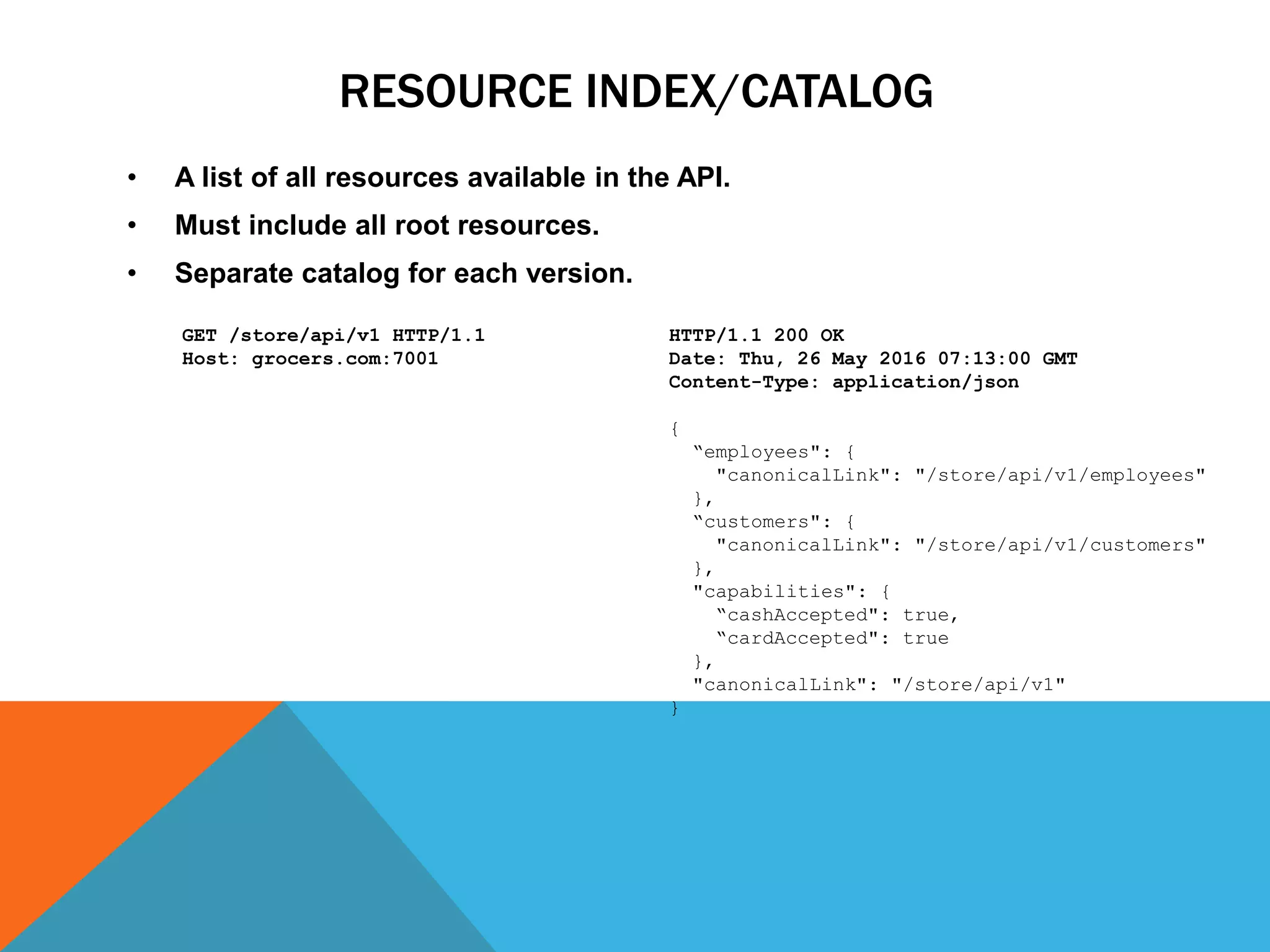


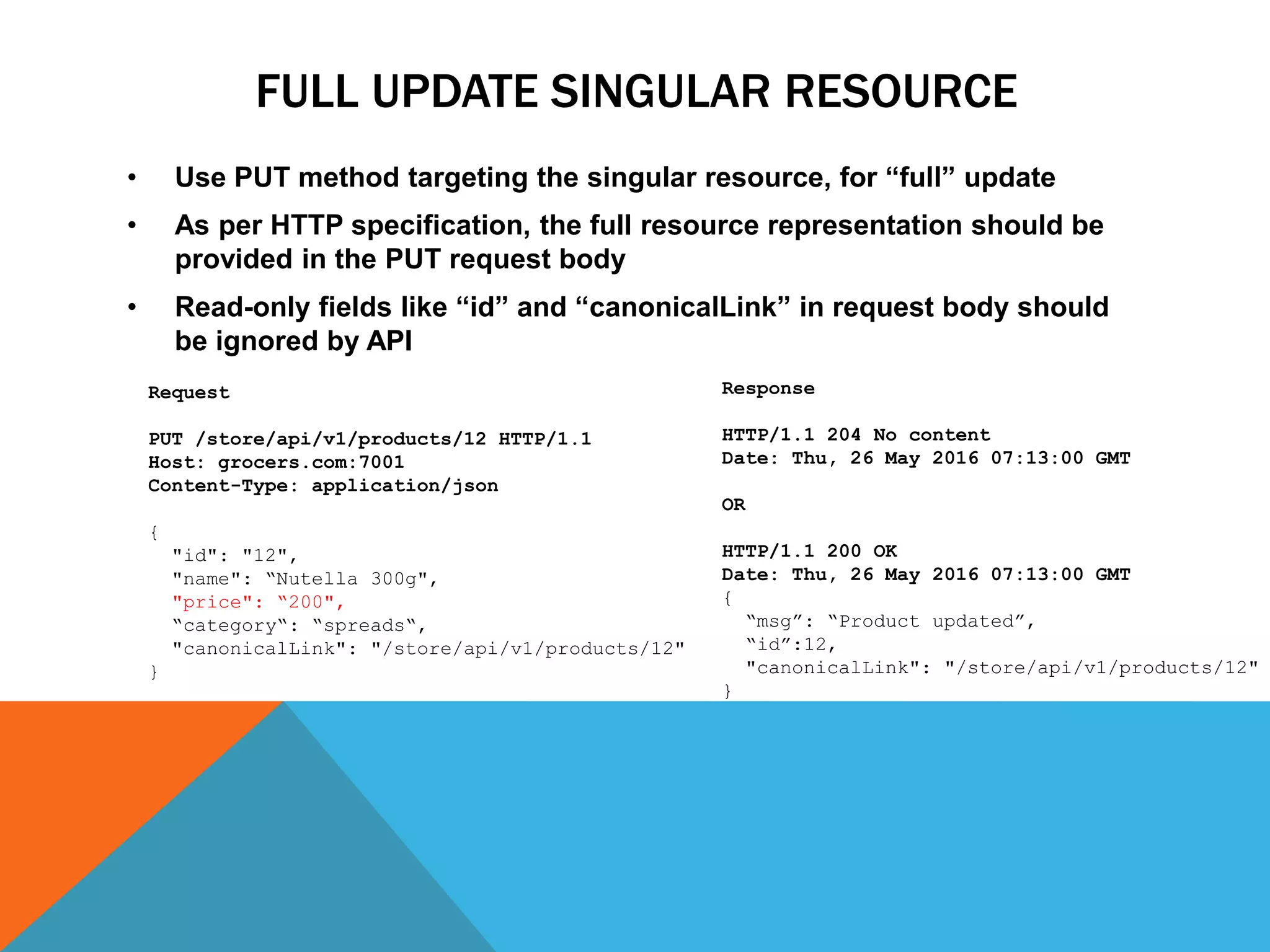
![PARTIAL UPDATE SINGULAR RESOURCE
• Use PATCH method along with a “patch document”
• Service SHOULD allow client to update only required attributes of a
resource
• Patch-document specification:
• XML Patch [RFC5261]
• JSON Patch (draft-ietf-appsawg-json-patch)
HTTP/1.1 204 No content
Date: Thu, 26 May 2016 07:13:00 GMT
OR
HTTP/1.1 200 OK
Date: Thu, 26 May 2016 07:13:00 GMT
{
“msg”: “Product price and category updated”,
“id”:12,
"canonicalLink": "/store/api/v1/products/12"
}
PATCH /store/api/v1/products/12 HTTP/1.1
Host: grocers.com:7001
{
"price": "300",
"category": ""
}
OR
To avoid HTTP proxy issues with PATCH, use:
POST /store/api/v1/products/12 HTTP/1.1
Host: grocers.com:7001
X-HTTP-Method-Override: PATCH](https://image.slidesharecdn.com/restapistandardsandbestpractices-160619181341/75/Rest-api-standards-and-best-practices-13-2048.jpg)
![GET COLLECTION RESOURCE
• API MUST return all default attributes of child resources along with
their canonical links.
• Based on performance or scalability requirements, paging and/or
filtering MAY be supported to return a subset of child resources.
HTTP/1.1 200 OK
Date: Fri, 03 June 2016 07:32:00 GMT
Content-Type: application/json
{
"items": [{
"id": "12",
"name": “Nutella 300",
"canonicalLink": “/store/api/v1/products/12"
},{
"id": 35",
"name": “Fruit Loops",
"canonicalLink": “/store/api/v1/products/35"
}],
"canonicalLink": "/store/api/v1/products“
}
GET /store/api/v1/products HTTP/1.1
Host: grocers.com:7001
Accept: application/json](https://image.slidesharecdn.com/restapistandardsandbestpractices-160619181341/75/Rest-api-standards-and-best-practices-14-2048.jpg)
![COLLECTION RESOURCE PAGING
• Paging is used to retrieve a subset of collection items based on two request
query parameters: offset and limit
• To get the next/previous page, query the next/previous link
• hasMore specifies if there are subsequent elements to be retrieved
HTTP/1.1 200 OK
Date: Fri, 03 June 2016 07:32:00 GMT
Content-Type: application/json
{
"items": [{
"id": “11",
"name": “Taj Mahal tea",
"canonicalLink": “/store/api/v1/products/11"
},{
"id": 12",
"name": “Nutella 300",
"canonicalLink": “/store/api/v1/products/12"
}
],
"hasMore": true,
"canonicalLink": "/store/api/v1/products",
"selfLink": "/store/api/v1/products?offset=10&limit=2",
"previousLink": "/store/api/v1/products?offset=8&limit=2",
"nextLink": "/store/api/v1/products?offset=12&limit=2"
}
GET
/store/api/v1/products?offset=10&
limit=2 HTTP/1.1
Host: grocers.com:7001
Accept: application/json](https://image.slidesharecdn.com/restapistandardsandbestpractices-160619181341/75/Rest-api-standards-and-best-practices-15-2048.jpg)
